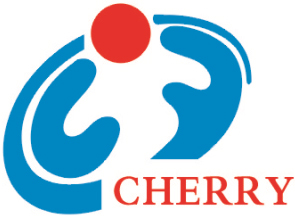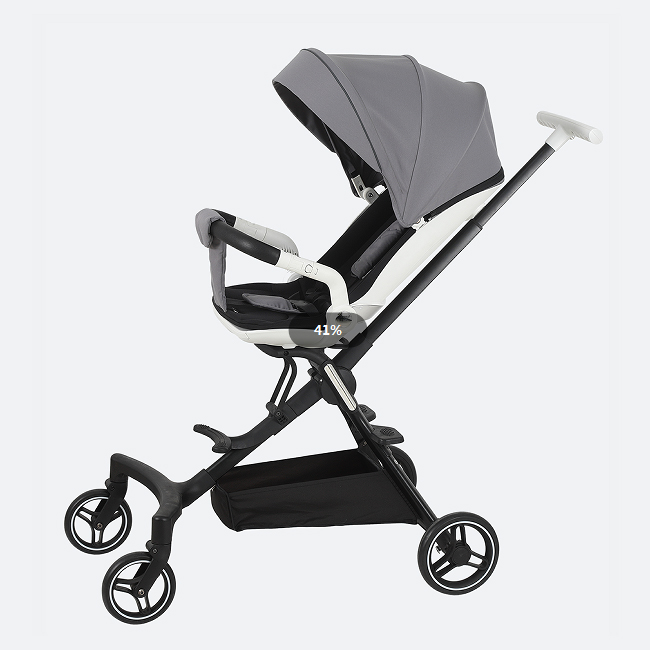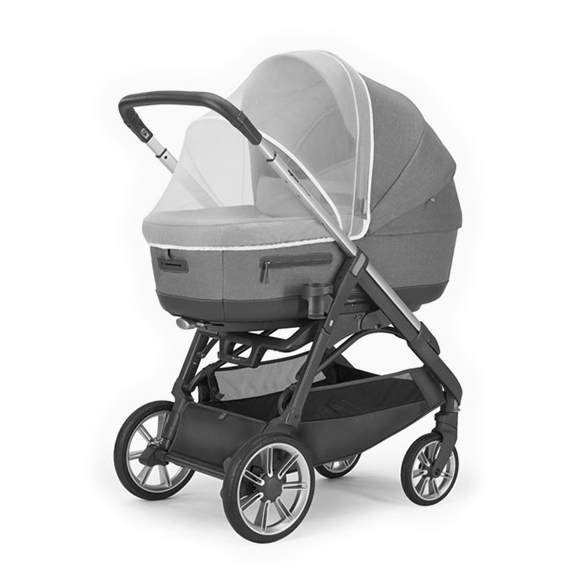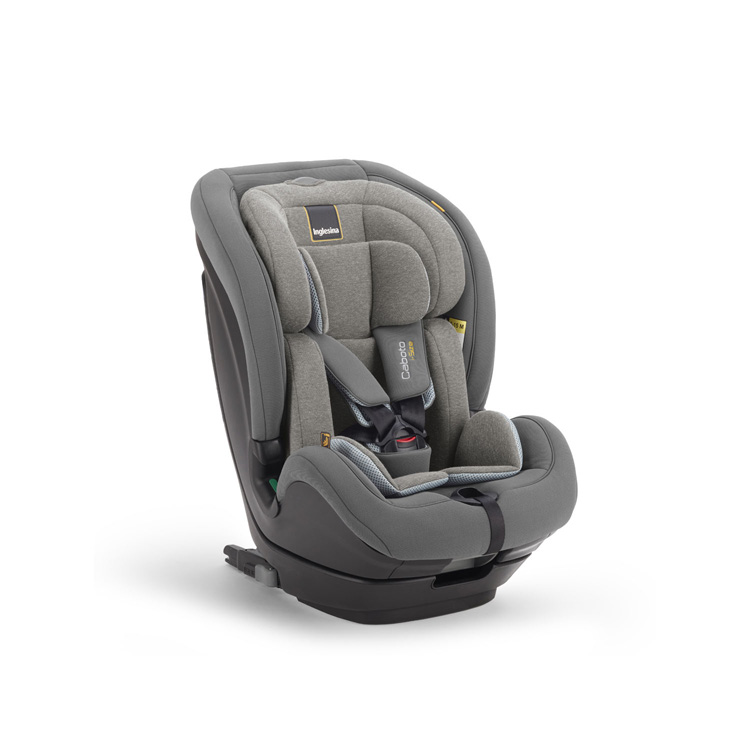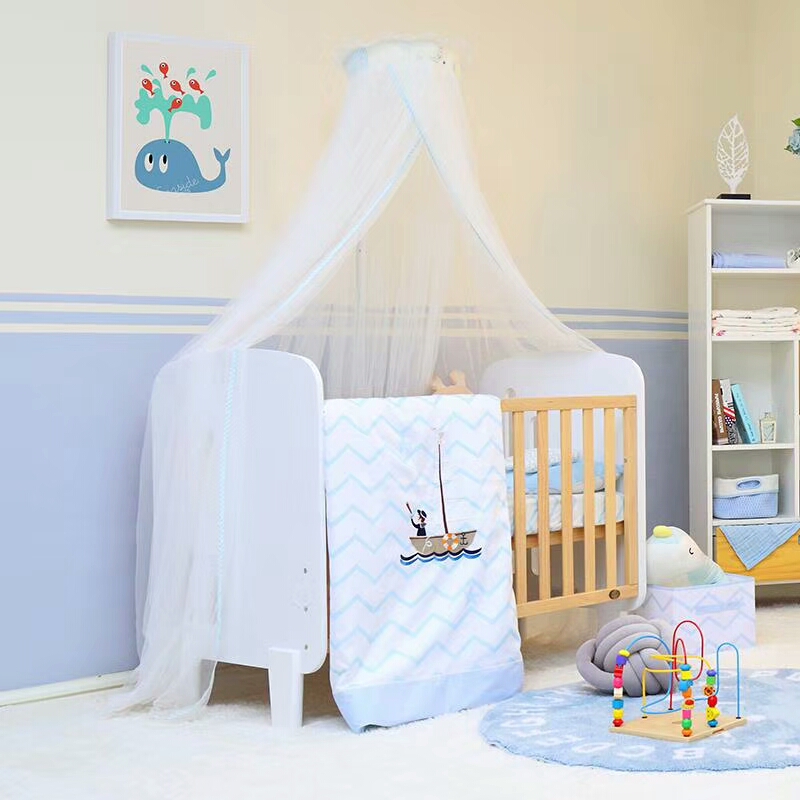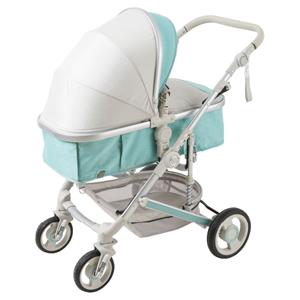Understanding the Basics: What Sets Them Apart?
First, let’s clarify what each type of stroller is designed for. High landscape strollers, as the name suggests, have a seat that sits much higher off the ground than traditional strollers. Typically, their seat height ranges from 110cm to 140cm, significantly taller than the average stroller, which might sit at 60cm to 80cm. This elevated design is intentional, with manufacturers emphasizing benefits like better visibility for the baby, easier interaction with parents, and the supposed reduction in exposure to car exhaust.
Lightweight umbrella strollers, on the other hand, prioritize portability. They’re compact, easy to fold, and lightweight—often under 7kg, compared to High Landscape strollers that can weigh 15kg or more. Their name comes from their foldable design, resembling an umbrella when collapsed, making them ideal for travel, public transportation, or small storage spaces.
Beyond these basics, newborns have unique needs that make the choice more nuanced. Their fragile bodies are in early development, requiring specific support that not all strollers can provide.
Why Newborns Have Special Stroller Needs
Newborns aren’t just small versions of older children—their bodies are delicate and demand specific care. Their spines are still forming, with natural curves like the cervical and lumbar curves not yet developed. This means they can’t hold their heads up, and their necks need constant support. A stroller lacking proper recline or support can cause discomfort or long-term spinal issues.
Their immune systems are immature, making them more susceptible to germs and pollutants. Their respiratory systems are also delicate, so exposure to car exhaust, dust, or irritants is more harmful than for older kids or adults.
Since they can’t communicate discomfort, parents must choose a stroller that minimizes jostling, provides a safe environment, and keeps them secure at all times.
A Deep Dive into High Landscape Strollers
Design Features That Benefit Newborns
Elevated Seat Height: The high seat brings the baby to a standing parent’s eye level, enabling easier interaction. Parents can talk, make eye contact, and soothe without bending, which helps newborns feel secure, reducing anxiety.
Superior Suspension Systems: To counteract the higher center of gravity (which could cause instability), High Landscape models often have advanced suspension. This includes spring-loaded wheels, shock absorbers, or pneumatic tires, absorbing bumps from various terrains for a smoother ride. For newborns, who can’t brace themselves, this is vital—rough rides can jostle their heads and bodies, causing discomfort or injury.
Recline Options: Most offer a full recline, up to 175 degrees (just short of flat to prevent choking if the baby spits up). This supported position is ideal for newborns, who sleep most of the day. Some models have adjustable footrests and head supports for customized comfort.
Spacious Seats and Padding: Newborns need room to move slightly and soft padding. High Landscape strollers typically have larger seats with thick, breathable padding that conforms to the baby’s shape, adding extra protection against bumps.
Five-Point Harnesses: Safety is key, and these strollers usually have five-point harnesses, securing the baby at the shoulders, waist, and between the legs. This is more secure than three-point harnesses in some umbrella strollers, preventing sliding or falling, even if the stroller tips.
The "Car Exhaust" Claim: Science and Reality
The claim that High Landscape strollers help babies avoid car exhaust is controversial. To understand, we need to look at how car exhaust behaves.
Car exhaust contains pollutants like carbon monoxide, nitrogen oxides, particulate matter (PM2.5 and PM10), and volatile organic compounds (VOCs). Many are heavier than air, accumulating closer to the ground.
Studies show pollutant concentrations near roadways are highest within 1 meter of the ground. A 2018 study in the Journal of Exposure Science & Environmental Epidemiology found PM2.5 concentrations at 0.5 meters were 32% higher than at 1.2 meters. High Landscape strollers position babies at 1.1m to 1.4m, theoretically reducing exposure.
Wind Speed and Direction: Wind disperses pollutants, reducing height differences in concentration. Calm conditions make differences more noticeable.
Traffic Density: Heavy traffic raises overall pollutant levels, making the relative reduction less meaningful.
Proximity to the Road: Closeness to the road increases concentrations. Near a busy street, even High Landscape strollers offer limited protection; a few meters away, the height advantage matters more.
Time of Day: Temperature inversions (cool air trapped near the ground by warm air) trap pollutants low, amplifying the height difference—common in early morning or evening in some climates.
The claim isn’t a gimmick but not a safety guarantee. It’s a minor benefit in specific situations, not a sole reason to choose this stroller.
When High Landscape Strollers Shine
Suburban or Residential Areas: For short walks, park trips, or nearby visits, their smooth ride and easy interaction enhance outings.
Parents Valuing Comfort Over Portability: If extra weight and bulk are acceptable, and baby’s comfort/safety are priorities, they’re a good choice. Many adapt to toddlers, with adjustable seats and higher weight limits, making them long-term investments.
Families with Multiple Children: Some convert to double strollers with a second seat or bassinet, a wise investment for future kids.
Potential Drawbacks
Weight and Size: Sturdy construction and large wheels make them heavy and hard to maneuver in tight spaces. Lifting into car trunks is tough for one person, and they may not fit small cars.
Cost: More expensive, ranging from \(300 to \)1000+, depending on brand and features.
Storage: They take up much space, especially in small apartments. Folding reduces size less than umbrella strollers.
Lightweight Umbrella Strollers: Pros and Cons for Newborns
What Makes Them Different?
Originally for older kids, many modern umbrella strollers are marketed for newborns, but they differ from High Landscape models in meeting newborn needs.
Compact and Lightweight: Easy to carry and store, great for frequent travelers. They fit in overhead bins, check as luggage, or fold for buses/subways.
Simpler Design: To stay light, they have fewer features—smaller wheels (often without suspension), minimal padding, and basic harnesses (three-point). Some recline but often only up to 140 degrees, not flat enough for newborns.
Affordability: Cheaper, with basic models at \(50 and advanced ones (better recline/padding) up to \)200.
Are They Safe for Newborns?
Recline Angle: Newborns need to lie almost flat. Many umbrella strollers recline partially, causing head flopping and airway restriction. Look for full recline (at least 170 degrees).
Support and Padding: Thin, hard padding fails to support newborns, causing pressure points. Higher-end models have more padding but less than High Landscape ones.
Suspension: Without it, bumps affect babies directly, jostling fragile heads and spines.
Harness Safety: Three-point harnesses are less secure than five-point ones, increasing sliding risk if the stroller tips.
Some umbrella strollers work for newborns with careful selection, but they’re less comfortable for daily use.
When to Choose an Umbrella Stroller
Frequent Travelers: Easy to carry through airports, fold for taxis, or store in hotels.
Small Living Spaces: Take less storage space, tucking into closets or under beds.
Secondary Stroller: Many use a High Landscape for daily use and an umbrella stroller for travel/portability, getting the best of both.
Limitations
Reduced Interaction: Low seats mean bending to interact, tiring during long outings.
Less Adaptability: Lower weight limits and fewer adjustments mean replacement when baby becomes a toddler.
Weather Protection: Smaller canopies and limited coverage leave newborns exposed to sun, rain, or wind, unlike High Landscape strollers with large canopies, rain covers, and foot muffs.
Expert Opinions: Pediatricians and Safety Experts
Pediatricians and safety experts have clear advice. Dr. Sarah Johnson, from the Children’s Hospital of Philadelphia, stresses recline: "Newborns need to lie flat or nearly flat for spinal development and breathing. Strollers for them need at least 170-degree recline."
Consumer Product Safety Commission (CPSC) experts emphasize harnesses: "Five-point harnesses are essential to prevent sliding/falling. Three-point ones are better than nothing but less secure."
They note high-center-of-gravity strollers need caution: "Lock wheels when stopped, avoid heavy bags on handlebars (risk of tipping), and watch uneven terrain."
Real-World Experiences: Parent Reviews
High Landscape Stroller: "Worth every penny. Great suspension—baby sleeps through gravel path walks. Easy to interact, and he loves the view. Heavy, but my husband lifts it into the car—small price for his comfort." – Emily, mom of a 3-month-old.
Umbrella Stroller: "Great for travel—easy to carry on flights. But daily neighborhood walks are bumpy; baby fusses faster. Glad we have it for travel, but wish we had a High Landscape for home." – Mark, dad of a 2-month-old.
Hybrid Approach: "High Landscape for park walks and groceries; umbrella for visiting parents. More expensive, but fits our lifestyle." – Lisa, mom of a 4-month-old.
Reviews show daily use with newborns favors High Landscape strollers, while umbrella ones suit travel.
Maintenance and Care
Proper maintenance keeps strollers safe, crucial for newborns’ vulnerability to germs.
High Landscape Strollers
Seat Cleaning: Remove spit-up, diaper leaks, or food. Most have machine-washable fabric—follow instructions, avoid harsh detergents.
Wheel Care: Check for hair, string, or stones in axles. For pneumatic tires, check air monthly.
Frame and Hinges: Wipe frame with a damp cloth. Lubricate hinges/recline mechanisms every few months.
Safety Checks: Ensure harness works, brakes lock, and no loose parts before each use.
Umbrella Strollers
Folding Mechanism: Wipe hinges with a dry cloth; avoid water to prevent rust.
Seat Cleaning: Spot-clean with mild soap and water—don’t soak, to protect the frame.
Wheel Maintenance: Check for debris; clean after dirty terrain outings (smaller wheels clog easily).
Safety Checks: Ensure recline locks, brakes work, and harness is intact.
How to Choose: A Step-by-Step Guide
Assess Lifestyle: Typical outings (walks vs. travel), public transit use, and storage space.
Prioritize Newborn Needs: List non-negotiables (full recline, five-point harness, good suspension). Reject strollers missing these.
Consider Long-Term Use: Decide if it needs to work for toddlers—High Landscape strollers are more adaptable.
Set a Budget: High Landscape strollers cost more; factor in accessories (rain covers, cup holders).
Test Before Buying: Visit stores to lift, fold, and push strollers. Check maneuverability and seat comfort.
Read Reviews: Focus on newborn parents’ feedback—handling of bumps, ease of cleaning, baby comfort.
Conclusion: Making the Right Choice
Umbrella strollers suit frequent travelers, small spaces, or as backups—requires careful selection for newborn needs.
"Avoiding car exhaust" is a minor, situation-dependent benefit, not a deciding factor. Choose a stroller fitting your lifestyle, keeping baby safe, comfortable, and making outings enjoyable.
Remember, newborns grow into toddlers, and stroller needs change. Focus on making early outings stress-free and pleasant for both of you.
